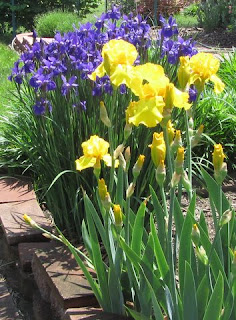 |
| Peony |
Mid-May in this cool, wet spring is a beautiful time, even in Deer Country, as perennial flowers, shrubs, and trees almost demand that we stop to admire their blooms, to take a photograph or two, to savor the occasional fragrance.
Here are photos of plants that have been blooming at Meadow Glenn during the last four days, along with a short comment about each and their “deer resistance.”
Peony: Every home that I can remember living in has had a garden with peonies. My dad used to cut them in New Jersey to take as remembrances to the graves of his and my mother’s parents. Peonies (Paeonia spp.) are deer resistant.
 |
| Dianthus (front) and orchid (back) |
 |
| 'Double Knock Out' |
 |
| Chives |
 |
| Bleeding heart |
 |
| 'Blue hill' salvia |
 |
| Bearded iris (front) and Siberian iris (back) |
 |
| Pansy |
 |
| Arrowwood viburnum |
 |
| Kousa dogwood |
 |
| 'Wolf Eyes" kousa dogwood |
Bottom line: ten of the 13 flowering plants shown in photos in this posting are deer resistant and grow in Deer Country without sprays or cages. The other three, however, are deer candy—and must be protected in some way.
That’s life in Deer Country, where plants sometimes are caged and deer always run free.
My wolf eyes kousa dogwood has been in the ground for two weeks. She is a pretty little thing! Despite the lush greenery in the vicinity, deer decided to chomp on my beloved tree last night! It couldn't be because they are hungry....it has to be that they are greedy! Orange County, NY...60 miles northwest of New York City.
ReplyDelete